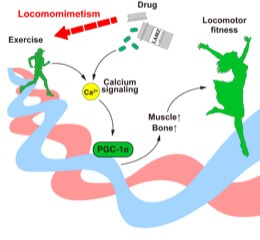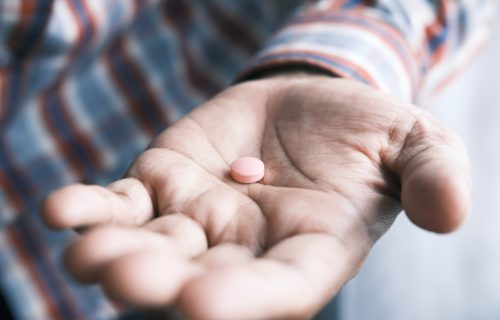
Groundbreaking pill could bring life-changing help to older adults battling frailty or sedentary individuals unable to exercise
TOKYO — Could a pill one day reverse the health harms from living a sedentary lifestyle? Scientists in Japan say they’ve developed a drug which can reproduce the positive effects that exercise typically has on people’s muscles and bones.
Researchers at the Tokyo Medical and Dental University (TMDU) report successfully replicating a compound that induces calcium and stimulates muscle cell growth — a process which naturally occurs in healthy adults as a result of exercise. Countless previous studies (and general common sense) show how regular physical exercise helps maintain muscle and bone strength, particularly as people age. However, many bedridden or elderly people are unable to engage in such activity, which can create “locomotor frailty,” or a significant weakening of one’s muscles and bones.
The TMDU researchers involved in this latest study, published last month in the journal Bone Research, believe their so-called “exercise drug” may assist in the treatment of locomotor frailty. Their findings suggest that the medication can be used to mimic the effects of exercise in sedentary individuals and to treat locomotor frailty.
The scientists first identified the compound, aminoindazole derivative locamidazole, also referred to as LAMZ. This compound stimulates muscle growth, induces calcium and augments tissue — changes which normally occur with regular exercise. Researchers went on to successfully administer a replica drug to mice, sparking optimism they will soon be able to reduce frailty and promote bone formation in people who are unable to stay physically active.

LAMZ “was capable of stimulating the growth of muscle cells and bone-forming cells, osteoblasts, while suppressing the growth of bone-resorbing cells, osteoclasts,” study authors note.
When the exercise drug was administered orally to mice it showed numerous positive signs, including the absence of any side effects. Additionally, the researchers say LAMZ successfully mimicked calcium and PGC-1a signaling pathways. In people not affected by locomotor frailty issues, these pathways activate during exercise and allow molecular stimulation of one’s muscles and bones.
“We were pleased to find that LAMZ-treated mice exhibited larger muscle fiber width, greater maximal muscle strength, a higher rate of bone formation, and lower bone resorption activity,” says lead author of the study Takehito Ono, in a statement.
The researchers caution that lengthy periods of inactivity can result in a weakening of muscles, known as sarcopenia, and bones, known as osteoporosis. People with locomotor frailty often have extreme difficulty walking or even doing sit-and-stand motions. The TMDU research team said this type of drug therapy may be useful in treating both sarcopenia and osteoporosis. This latest drug may especially help patients who are bedridden or who have cerebrovascular disease or dementia.
“Both oral and subcutaneous administration of the drug improved the muscle and bone of mice with locomotor frailty,” senior study author Tomoki Nakashima concluded. The researchers reiterated that regular workout routines help maintain bone and muscle strength in all adults.
Study authors did not mention when the exercise drug could be made available to patients in need. Testing in humans would certainly be necessary before predicting widespread distribution of the pill.

